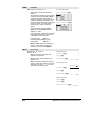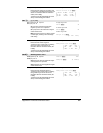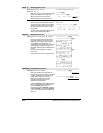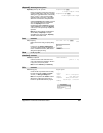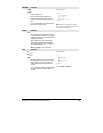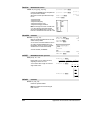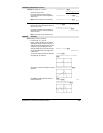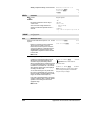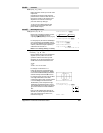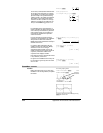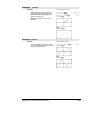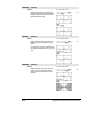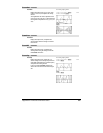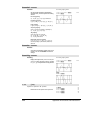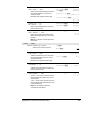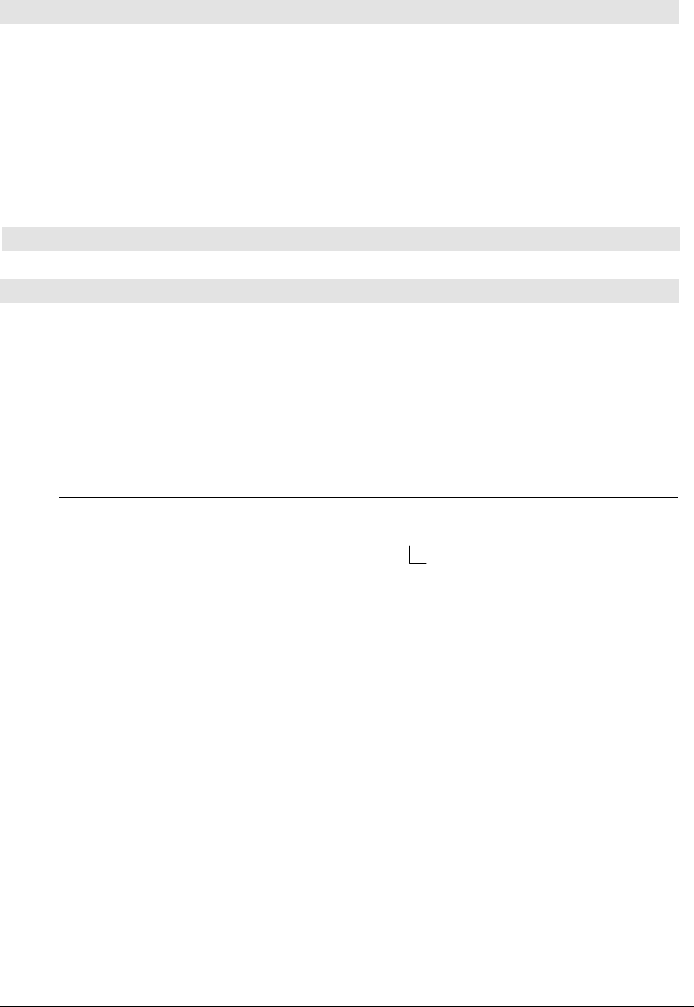
894 Appendix A: Functions and Instructions
when() is helpful for defining recursive functions.
when(n>0,nù factoral(nì1),1)
! factoral(n) ¸ Done
factoral(3)
¸ 6
3
! ¸ 6
While CATALOG
While
condition
block
EndWhile
Executes the statements in
block
as long as
condition
is true.
block
can be either a single statement or a
sequence of statements separated with the “:”
character.
Program segment:
©
:1
! i
:0
! temp
:While i<=20
: temp+1/i
! temp
: i+1
! i
:EndWhile
:Disp "sum of reciprocals up to 20",te
©
“With” See |, page 912.
xor MATH/Test menu
Boolean expression1
xor
Boolean expression2
⇒
⇒⇒
⇒
Boolean
expression
Returns true if
Boolean expression1
is true and
Boolean expression2
is false, or vice versa.
Returns
false if
Boolean expression1
and
Boolean
expression2
are both true or both false. Returns a
simplified Boolean expression if either of the
original Boolean expressions cannot be resolved
to true or false.
Note: See
or.
true xor true ¸ false
(5>3) xor (3>5)
¸ true
integer1
xor
integer2
⇒
⇒⇒
⇒
integer
Compares two real integers bit-by-bit using an
xor operation. Internally, both integers are
converted to signed, 32-bit binary numbers.
When corresponding bits are compared, the result
is 1 if either bit (but not both) is 1; the result is 0
if both bits are 0 or both bits are 1. The returned
value represents the bit results, and is displayed
according to the
Base mode.
You can enter the integers in any number base.
For a binary or hexadecimal entry, you must use
the 0b or 0h prefix, respectively. Without a prefix,
integers are treated as decimal (base 10).
If you enter a decimal integer that is too large for
a signed, 32-bit binary form, a symmetric modulo
operation is used to bring the value into the
appropriate range.
Note: See
or.
In Hex base mode:
0h7AC36 xor 0h3D5F ¸ 0h79169
In Bin base mode:
0b100101 xor 0b100 ¸ 0b100001
Note: A binary entry can have up to 32 digits
(not counting the 0b prefix). A hexadecimal
entry can have up to 8 digits.
Important: Zero, not the letter O.



